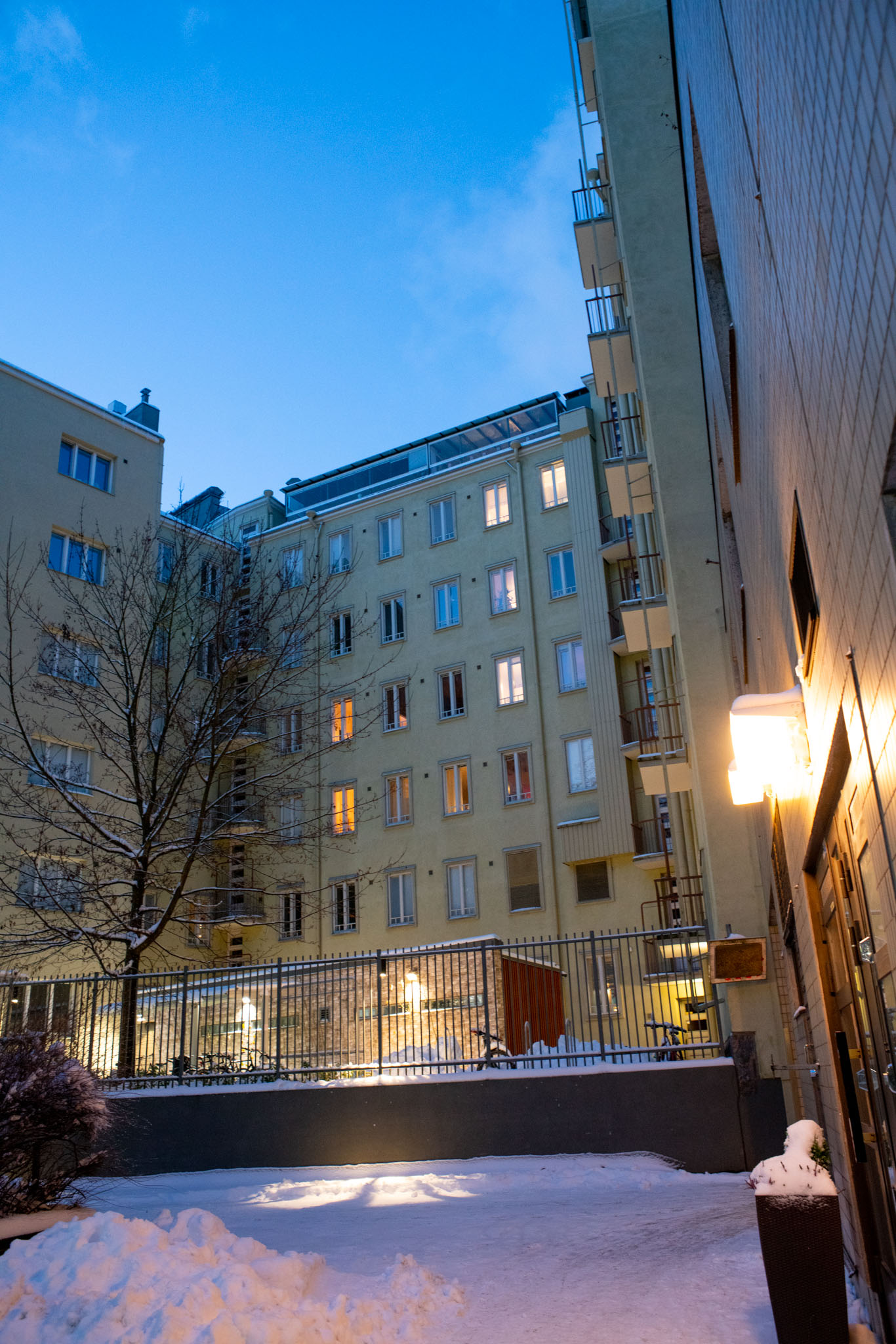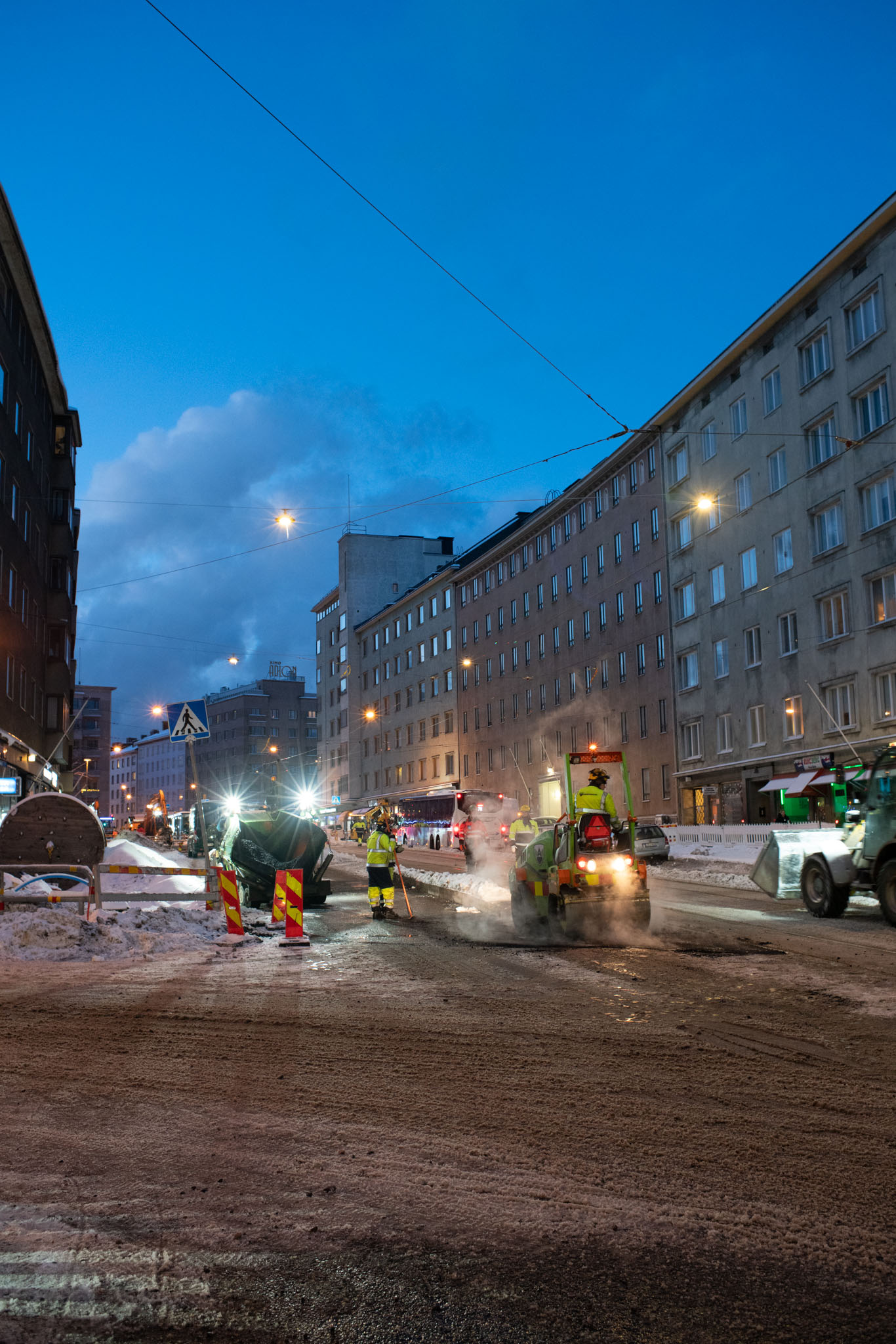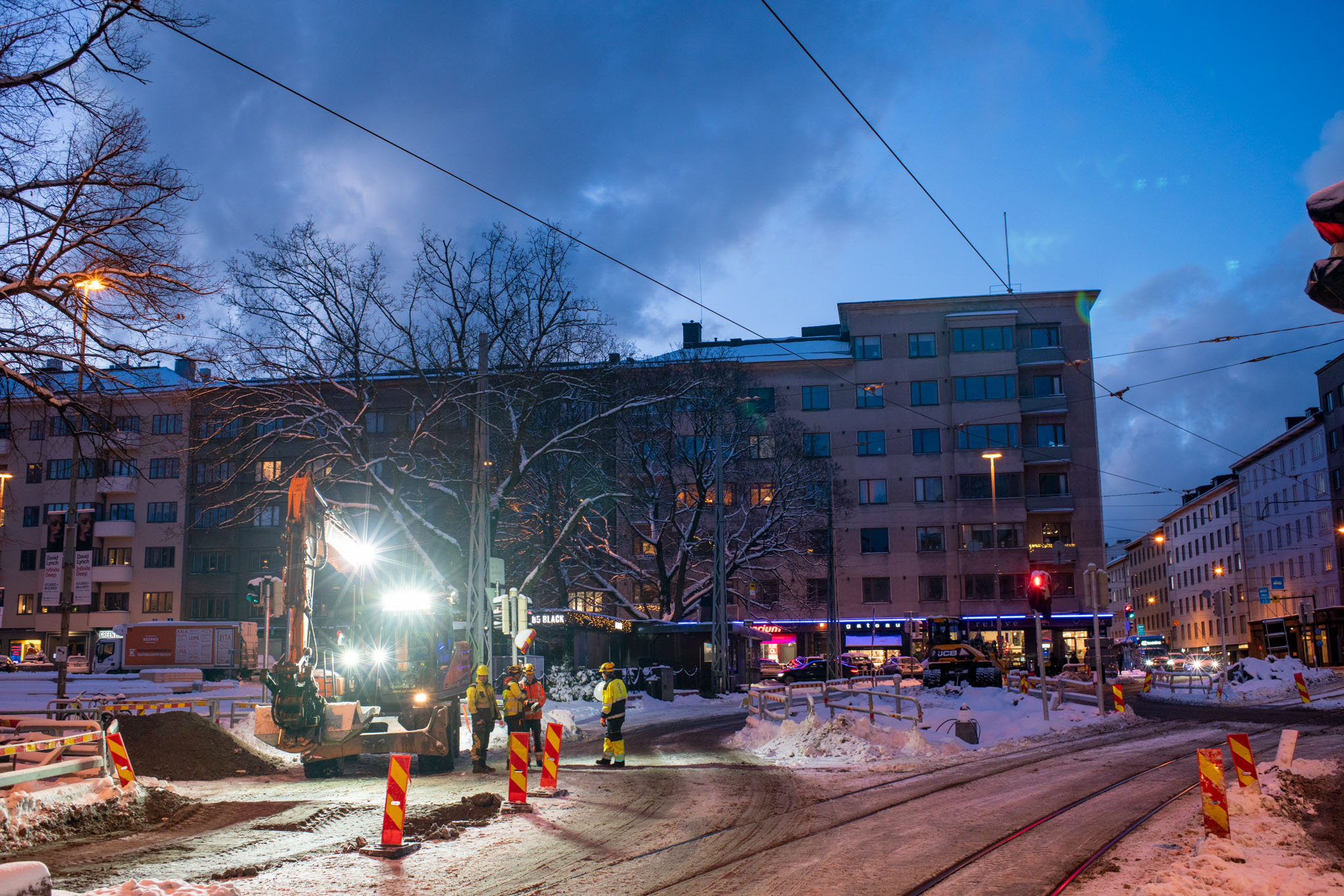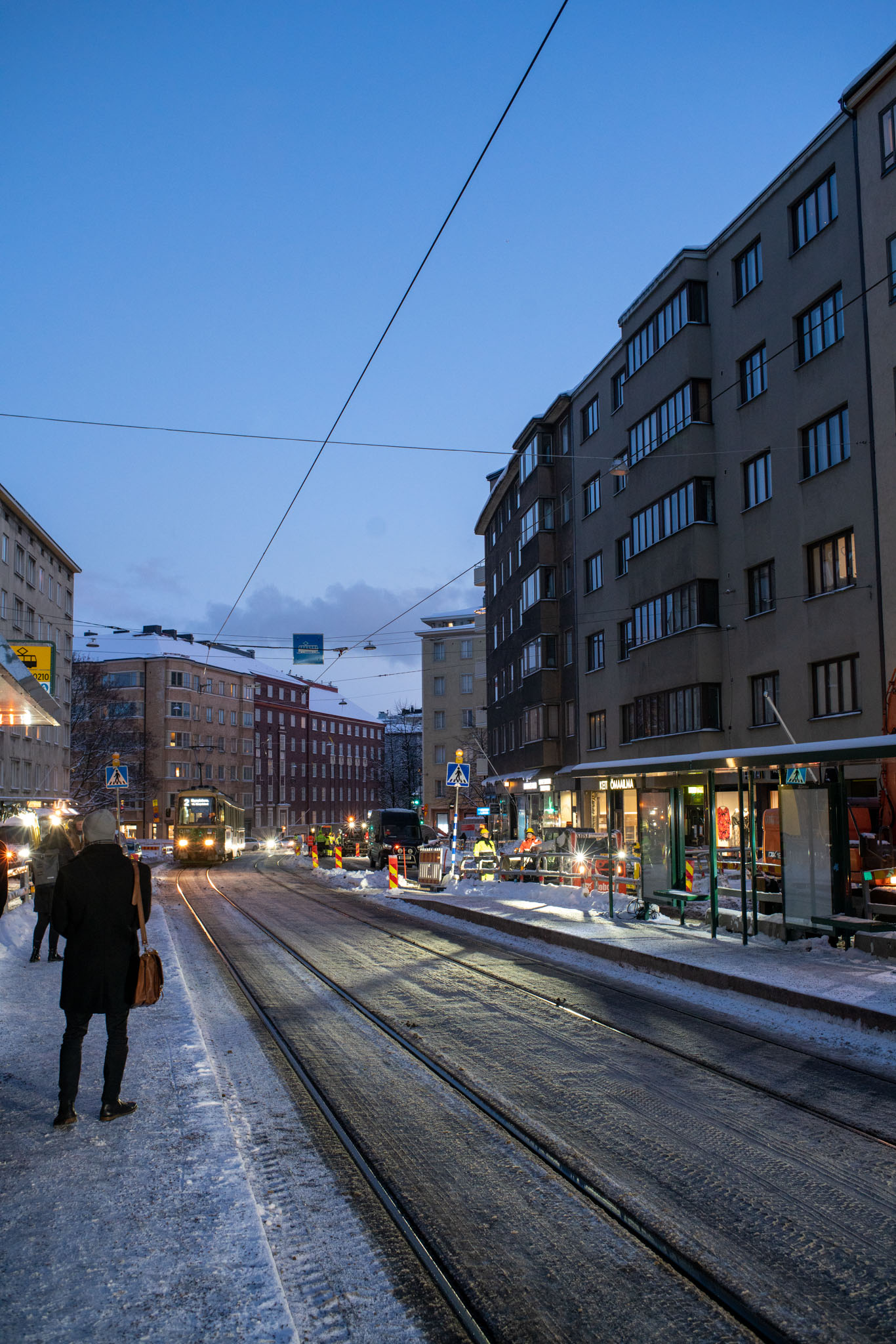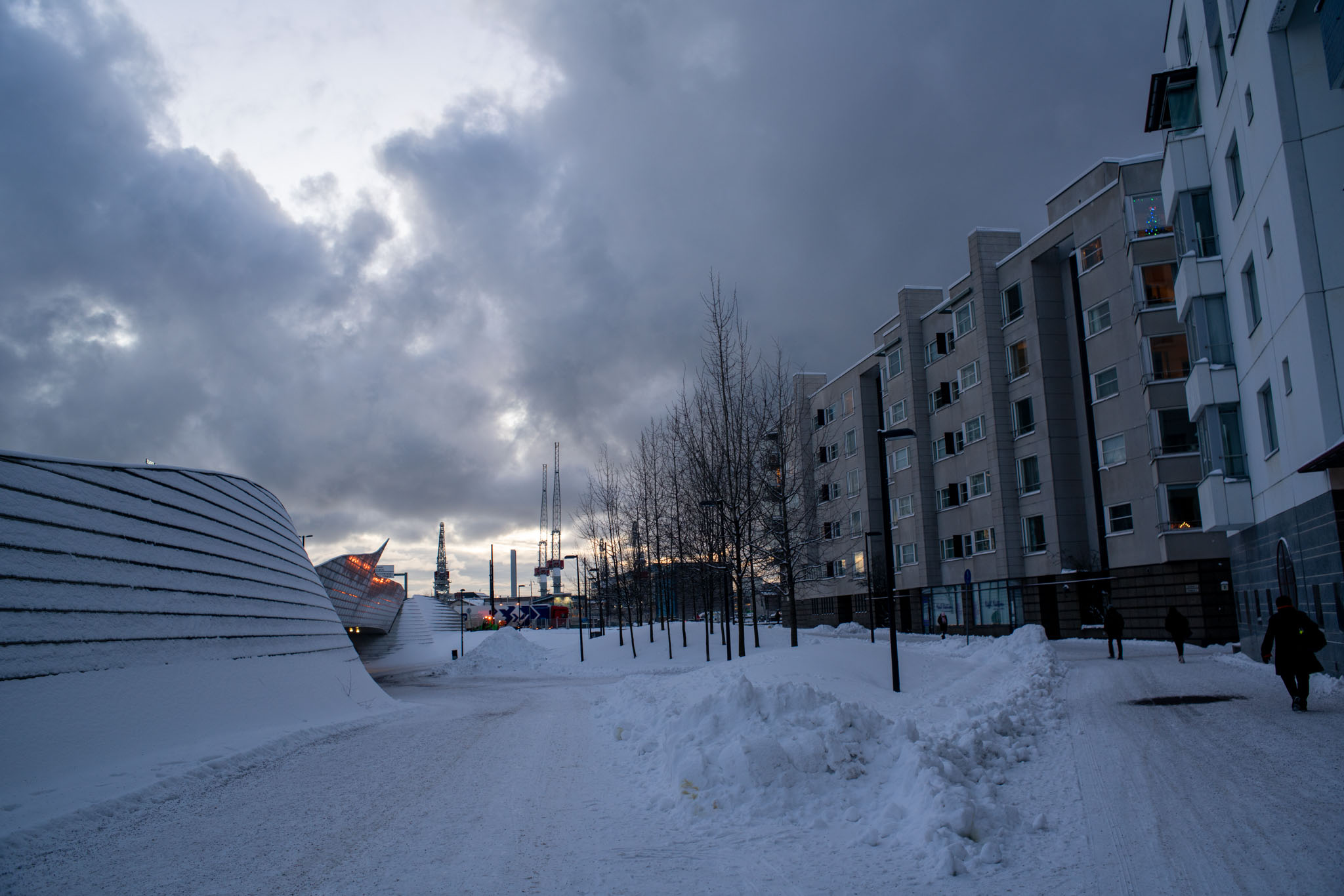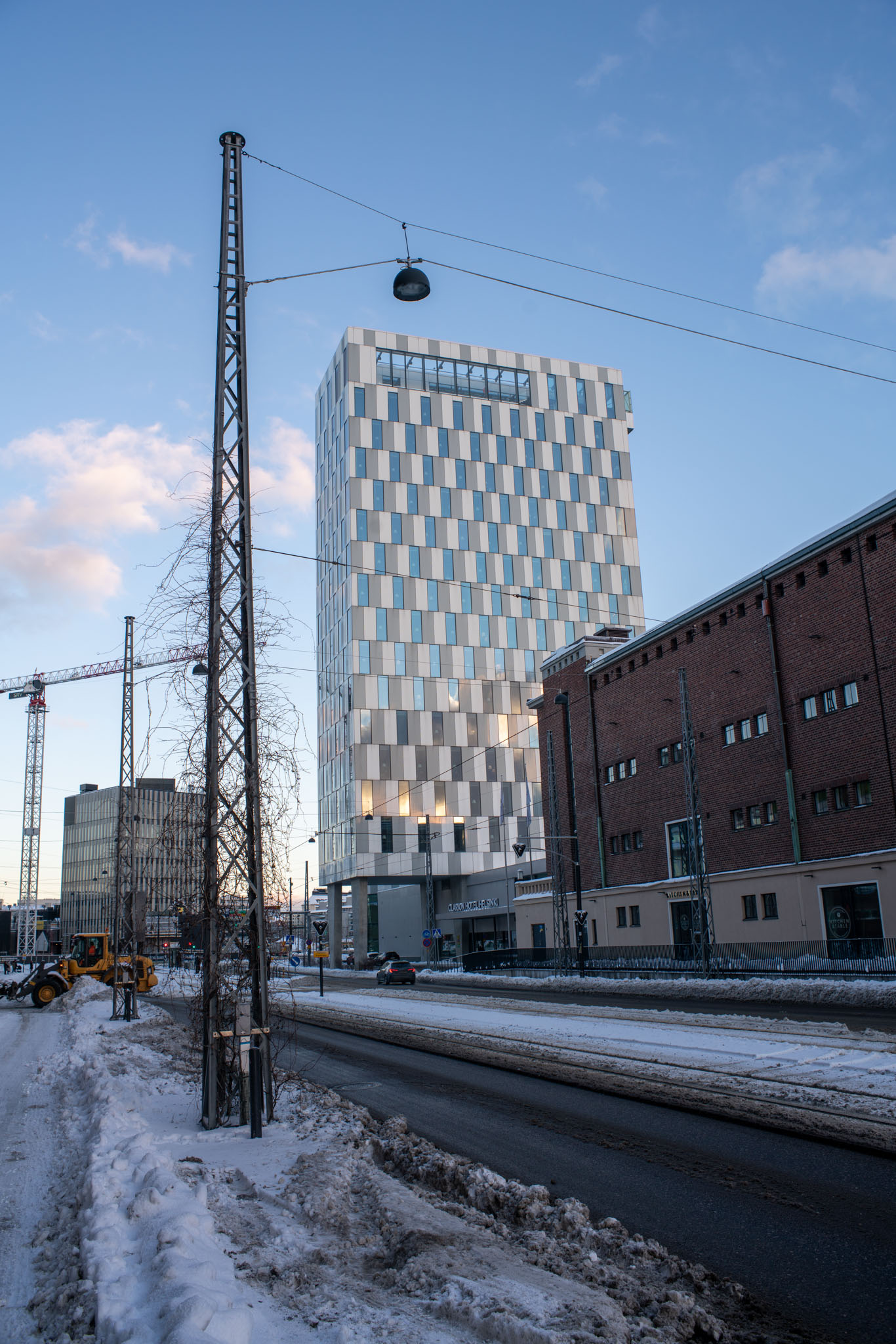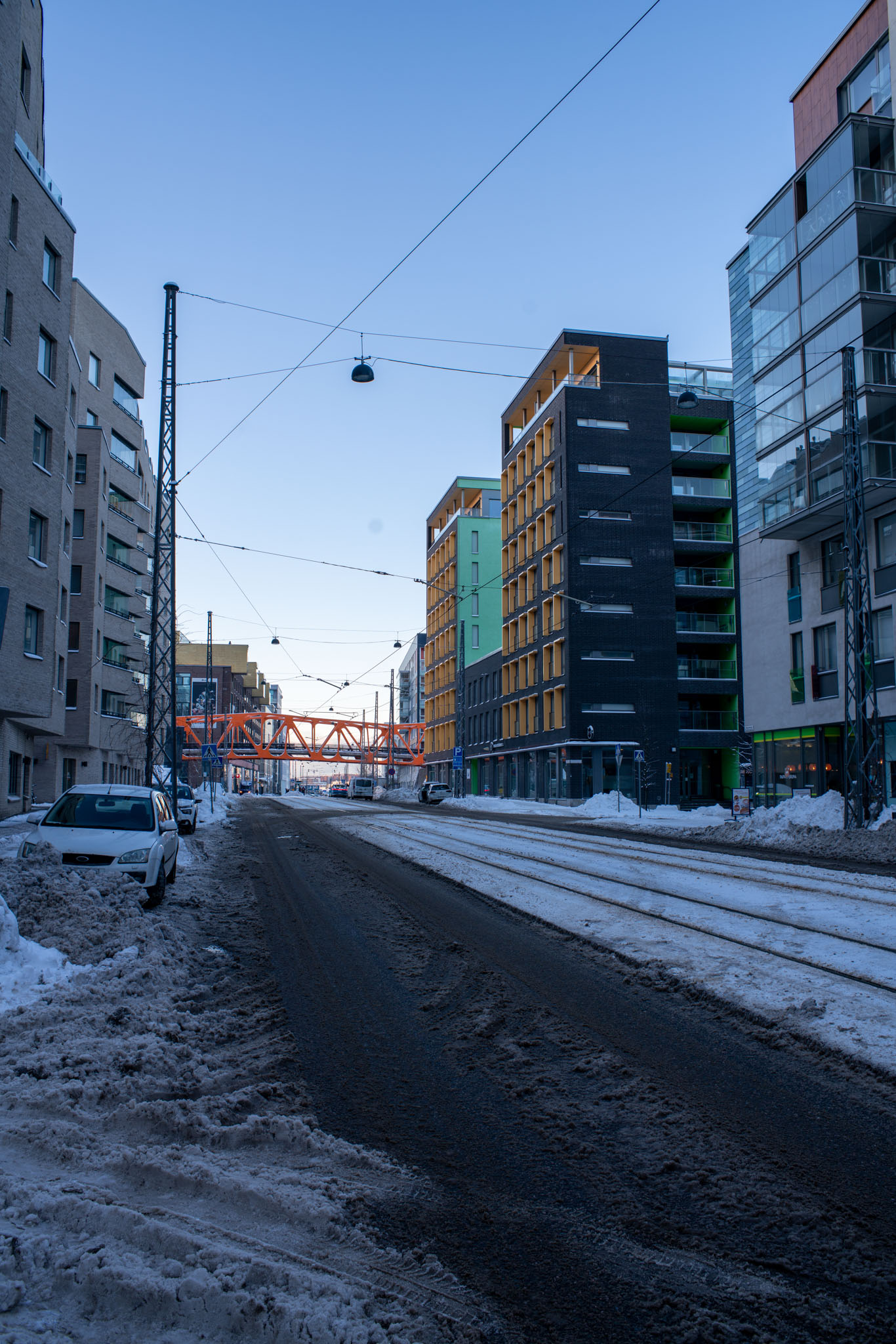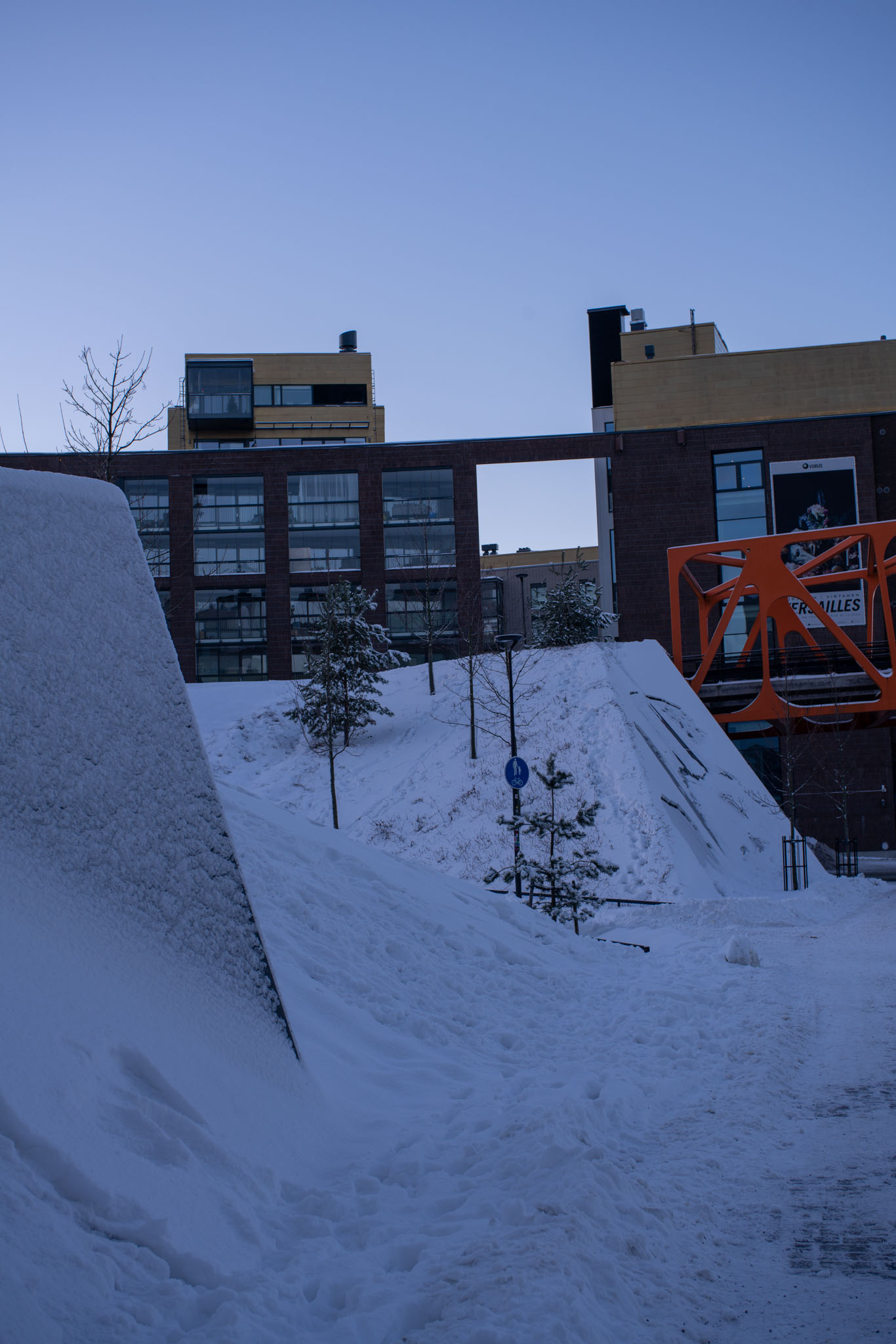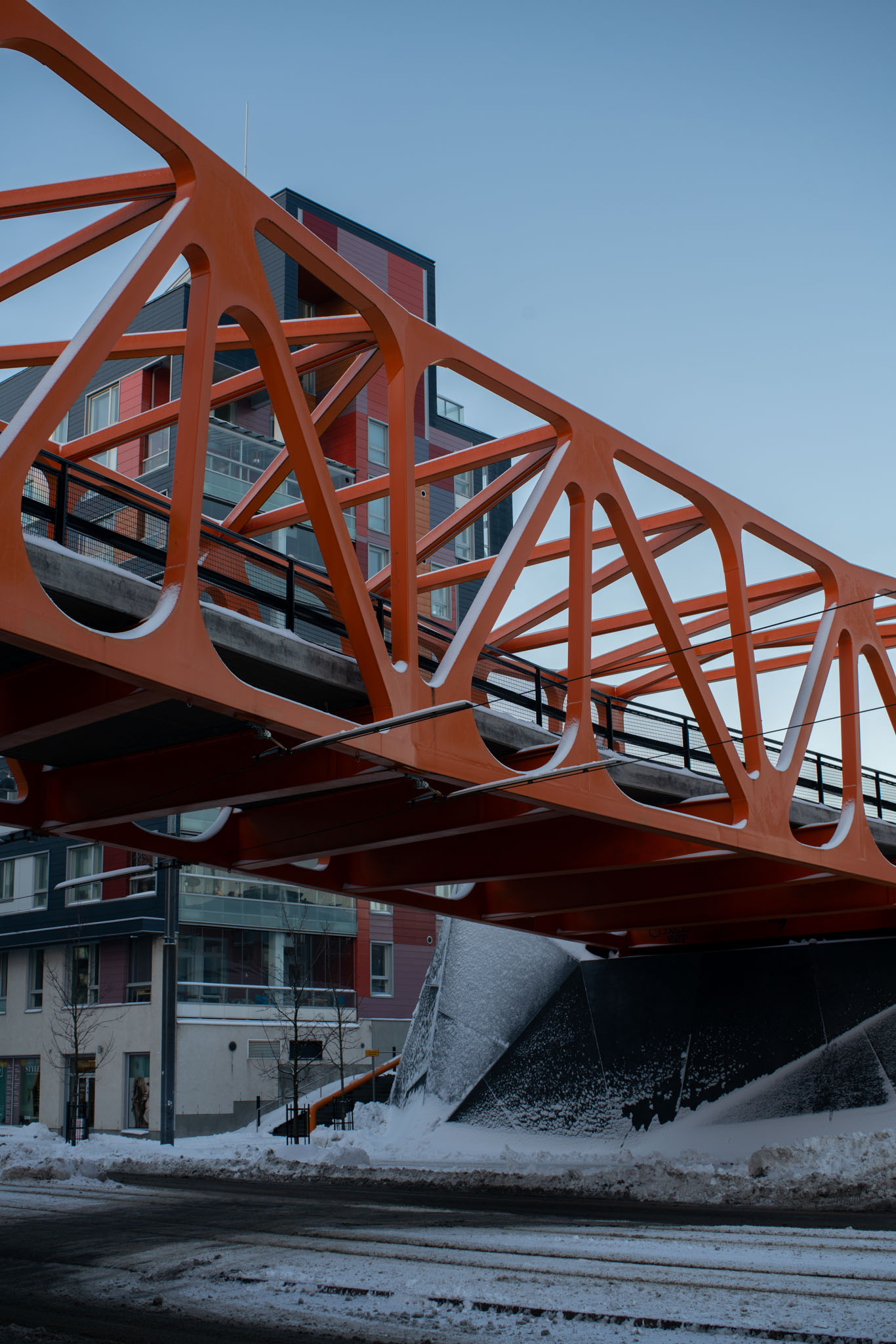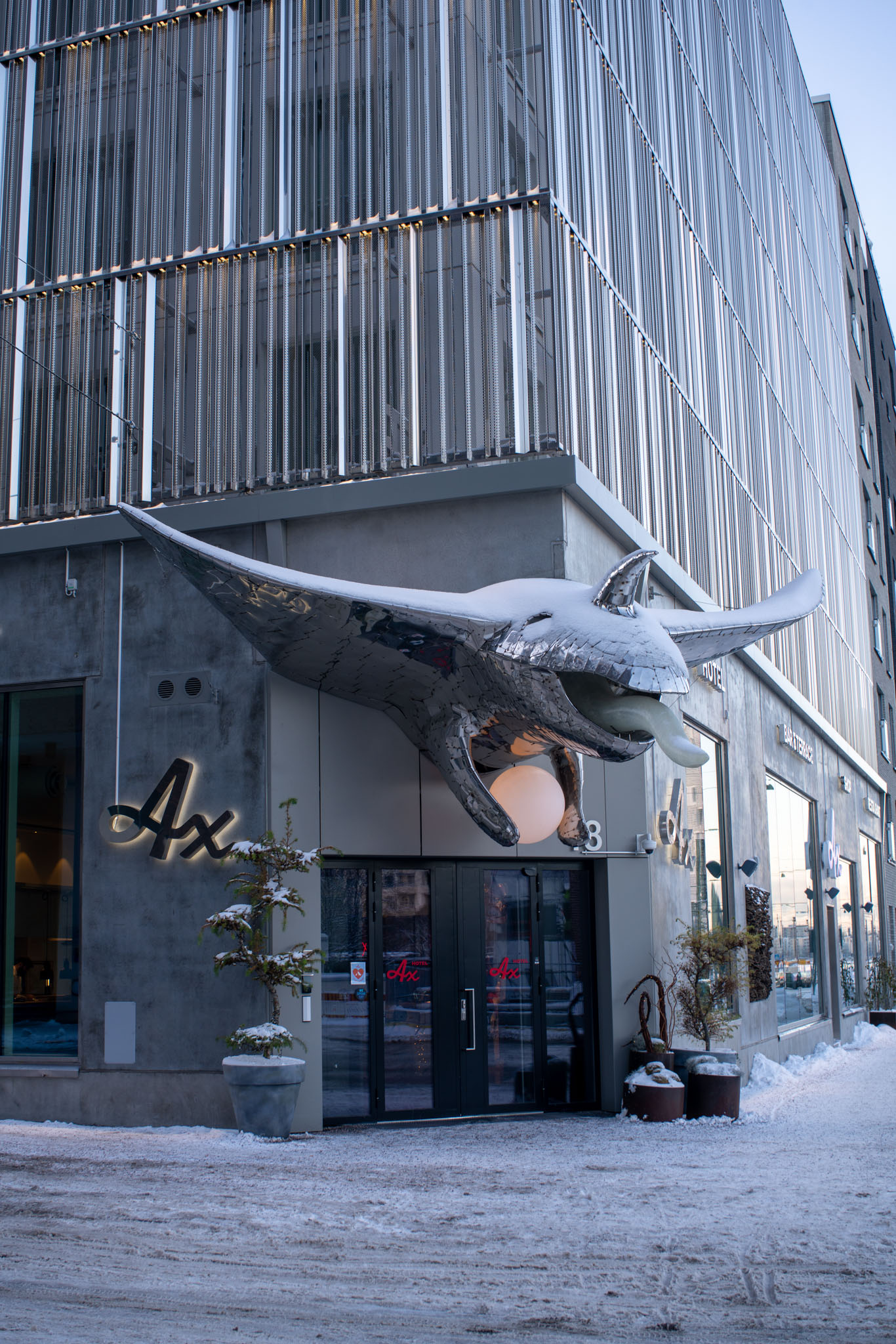Pekka Buttler, 9th December 2022
The lens’ data sheet is forthcoming
The setup
• Helsinki, Finland. 9th November 2022 between 08:15 and 10:35 (morning, partly cloudy).
• Sony ⍺7R2, no-name dumb adapter, Nikkor K 28–45 mm f/4.5 lens (as pictured)
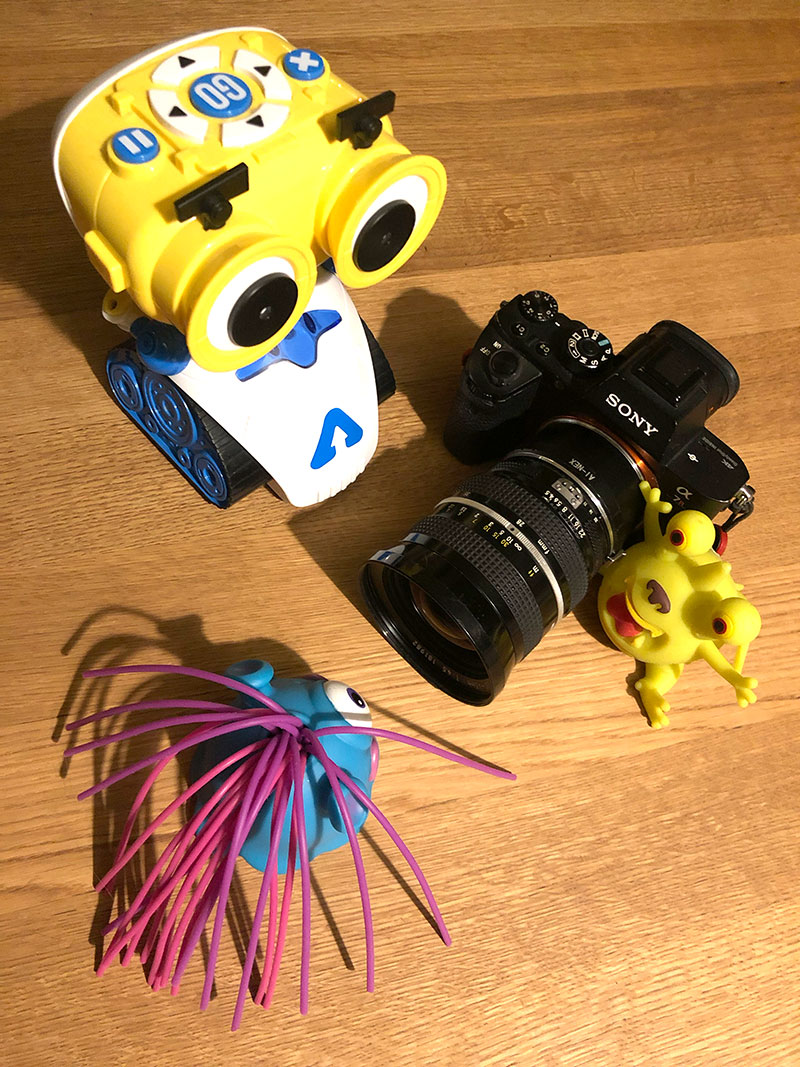
• Both optics and outward appearance of my sample are near-mint. This sample is originally a K-type (pre-Ai) that has later been Ai’d with Nikon parts. However, the Ai indexing tab in this lens reaches a bit farther back than it does with other Ai lenses. While this is not an issue with any Nikon Ai-compatible body I’ve tested, it was not compatible with my current go-to Nikon F to Sony FE adapter (the K&F Pro). Hence, I’ve used the lens with a rather good but unassuming No-Name adapter.

The Lived experience
[Please remember that all comments apply to me personally, and this specific sample]
The hassle:
What hassle? Nikon F lenses are eminently usable as adapted lenses (as long as they have a proper aperture ring, which this lens obviously does). Mount the lens on the adapter, mount the adapter on your mirrorless body, make sure your cameras settings don’t expect a modern high-tech lens, and go shooting.
The ergonomics:
To rubber or not to rubber?
Those who like legacy lenses for the fact that they’re not modern lenses typically tend towards appreciating metal (milled) focus rings, and I certainly see their point. On the other hand, when temperatures are intemperate (it was –3° C during the shoot), there is an upside to rubberised control surfaces. In any case, the rubberised focus ring is tactile and precise.
The zoom ring is also tactile, and allows for an astonishing amount of fine tuning, because – face it – the zoom ratio for this lens is only 1,6x, but its zoom ring moves as much as with zooms that have 4x zoom ratios. The Zoom ring also has indicated positions for 35 and 40 mm focal lengths (beside the obvious extremes), which I appreciate.
I found that this lens’ zoom range – while often criticised – offers a broad range of alternatives in the wide-to-standard range, and I encountered no situations (during this city walk) wherein I would have really needed 5–10 more millimeters at either end.
When wearing gloves, I noticed that working the aperture ring was not so easy, but on the other hand, I pretty much set it at f/5.6 and forgot about it (usually I would have gone for f/8 as my standard aperture for a city-scape shoot, but there was not so much light (for a related post, see here). While there is a minus-side to not having half-stop clicks (Nikon lenses never do), it makes the counting of clicks easier (I typically like to shoot without removing my eye from the EVF).
This lens is rather big – especially for a relatively dim, limited range zoom. On the other hand, the build quality is nothing short of stellar, which is understandable, because back in the 1970s the pros were far from easy to convince that zooms would ever be respect-commanding tools. And it is obvious that a lot of thought went into the lens’ construction. There are three things about the lens’ build that especially impress me.
1) The size of the lens remains the same no matter how you zoom or focus
2) The filter thread does not rotate
3) The zooming action is achieved by moving only the inner barrel of the lens, and the direction is reversed, which means that the filter threads manage to act as a built-in hood (the front element is nearest to the lens’ front at the wider angles, while being relatively deeply recessed at 45 mm.
The Image quality
I have not been pixel peeping, nor is this a side-by-side comparison, but I find sharpness and contrast to be fully sufficient considering that we’re talking about Nikon’s earliest wide-angle zoom (and one of the earliest altogether).
The lens is remarkably free from lateral chromatic aberration. Also, based on these shots, this lens does not suffer any extreme field curvature. Also, I find no indicators of significant corner softness at f/5.6 or f/8 (f/4.5 is a bit soft).
In general, I like the colour rendition and am reasonably pleased with how well the lens managed to render the few colors that were available. Being a wide-angle lens, it obviously produces some perspective distortion, but optical distortions are well-corrected. Also, vignetting is not field-relevant problem – even wide open – and is well under control from f/5.6 onward.
In extreme situations, the lens evidences some veiling, but considering that we’re talking about a mid 1970s wide zoom, it is rather remarkable how little veiling there is. In some situations bright point-light sources do produce discernible ghosts, but nothing excessive. What I find especially gladdening, is that the lens produces very nice sunstars already at f/5.6 (not even a full stop closed down).
The gallery
All images shot in RAW with Auto WB, IBIS on. The start of the walk-around took place before sunrise, but later images already have the sun above the horizon.
Post-processing: ACR Default, some tweaking of tones and some crop and straighten (some images), Resize to 2048 px, save as JPG (no heavy editing).
